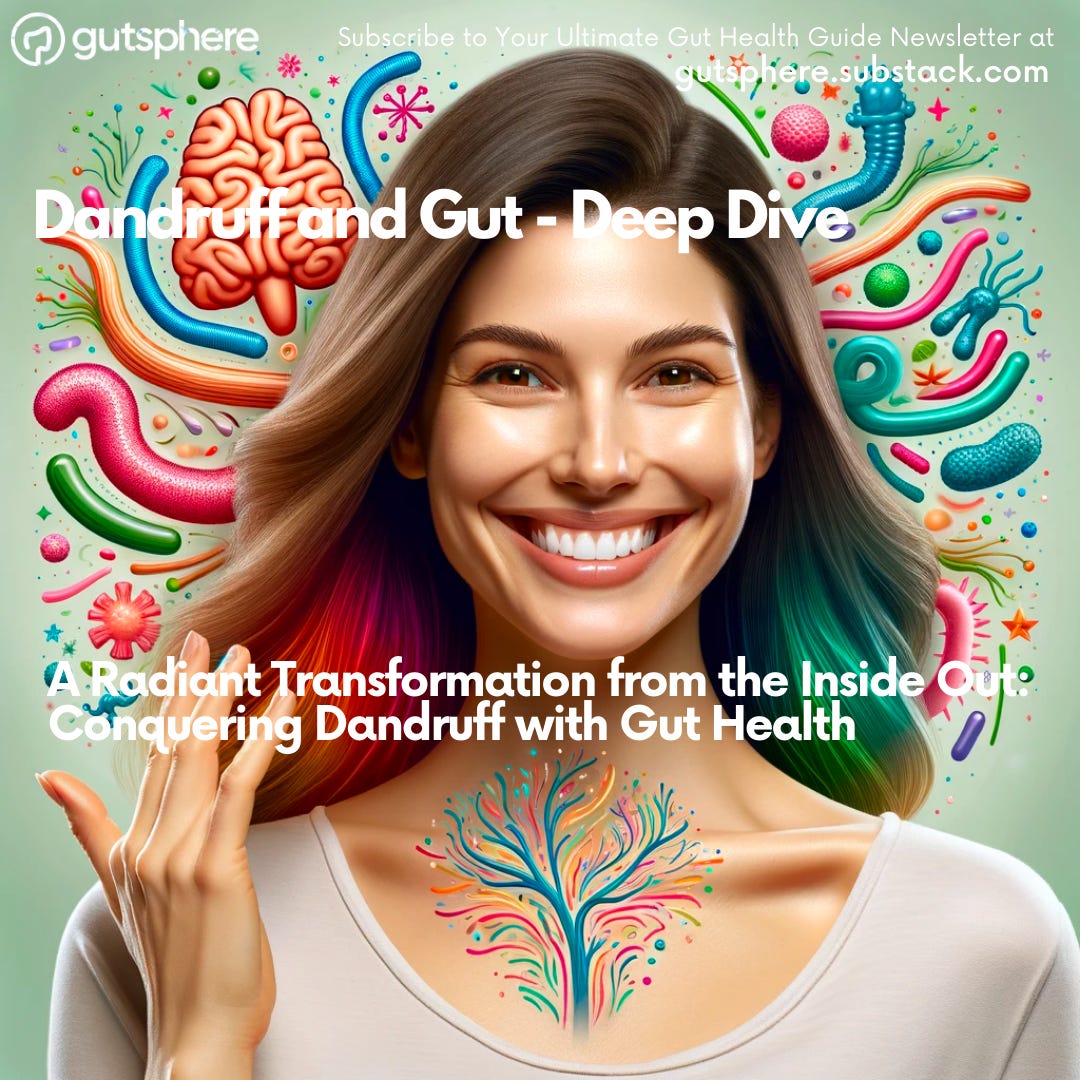Dandruff and the Microbiome: A Deep Dive ( Part 2/4)
A Radiant Transformation from the Inside Out: Conquering Dandruff with Gut Health
Hello Gutsphere Community!
Welcome back to our deep dive into dandruff and the microbiome. Having understood what dandruff is and the traditional approaches to managing it, we now turn our attention to the fascinating world of microbiomes – both on our skin and in our gut – and their potential impact on dandruff.
Introducing the Skin Microbiome
Our skin is home to a diverse community of microorganisms, including bacteria, fungi, viruses, and mites. This ecosystem, known as the skin microbiome, plays a crucial role in protecting against pathogens, influencing immune responses, and maintaining the skin's overall health.
Understanding the Gut Microbiome
Similarly, our gut microbiome, comprising trillions of microorganisms, significantly affects our digestion, immunity, and even mental health. It's a complex system, deeply interconnected with various aspects of our bodily functions.
The Gut-Skin Axis
The gut-skin axis refers to the communication pathway linking our gut and skin health. This connection suggests that an imbalance in the gut microbiome (dysbiosis) can manifest in skin conditions, including potentially dandruff. Factors such as diet, stress, and antibiotics can disrupt this balance, impacting both gut and skin health.
How Does the Gut Microbiome Impact Dandruff?
Immune System Modulation: An imbalanced gut microbiome can lead to systemic inflammation, possibly affecting the scalp and exacerbating dandruff.
Fungal Overgrowth Control: A healthy gut microbiome can help regulate the body's overall microbial balance, including the fungi involved in dandruff.
Nutrient Absorption: Optimal gut health ensures better nutrient absorption, crucial for maintaining healthy skin and scalp.
Exploring Gut-Friendly Treatments and Home Remedies
In addition to conventional treatments, focusing on gut health can offer a more holistic approach to managing dandruff:
Probiotic-Rich Foods: Yogurt, kefir, sauerkraut, and other fermented foods can help balance the gut microbiome.
High-Fiber Diet: Fiber feeds beneficial gut bacteria, promoting a healthy microbiome.
Hydration: Adequate water intake is essential for maintaining skin and scalp health.
Stress Management: Techniques like meditation and yoga can reduce stress, which in turn can help balance the gut microbiome.
Ayurvedic Practices: Ayurveda offers several scalp treatments using natural ingredients like amla, neem, and coconut oil, known for their soothing and microbial balance properties.
Conclusion
Understanding the link between dandruff and the microbiome opens up new avenues for holistic treatment and prevention. By nurturing our gut and skin microbiomes through diet, lifestyle, and natural remedies, we can potentially alleviate dandruff symptoms and improve overall scalp health.
Stay Connected
We invite you to share your experiences and thoughts on this topic. Have you noticed a change in your skin or scalp health with changes in diet or lifestyle? Let's continue this conversation together!
Request
Share
Our sincere request to you is to share the newsletter with your friends, family, and community so that they can benefit from the content. Also it will help us grow the newsletter, and eventually, as we release more content, digital tools, and more we will enable people around the world to live chronic disease free.
Subscribe
Feedback
Also, please give us feedback so that we can improve the content. And if there are any topics that you want us to cover please send us your questions and topics. Furthermore, if you try any of the things we provided information please share your experience with us.
Thank You
GutSphere Team
Disclaimer
Please note that the information provided in this newsletter is for informational purposes only and should not be considered as a substitute for professional medical advice, diagnosis, or treatment. If you have any concerns or questions about our health, please consult with a licensed healthcare professional. The information contained in this newsletter is not intended to diagnose, treat, cure, or prevent any disease. The publisher and authors of this newsletter assume no responsibility for any adverse effects that may result from the use of the information contained herein.



